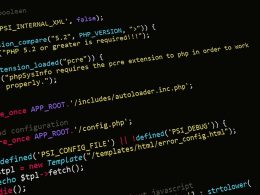1. Use Optionals Effectively
Optionals are Swift’s way of handling missing or nil values. They can be unwrapped using either force unwrapping or optional binding. Best practice is to use optional binding to avoid application crashes caused by force unwrapping.
Bad Practice:
“`swift
let optionalValue: String? = nil
let unwrappedValue = optionalValue!
“`
Good Practice:
“`swift
let optionalValue: String? = nil
if let unwrappedValue = optionalValue {
print(unwrappedValue)
}
“`
2. Prevent Strong Reference Cycles with Weak and Unowned References
Swift uses Automatic Reference Counting (ARC) to manage memory, which means that an object is kept in memory as long as there is a strong reference to it. However, if two objects have strong references to each other, creating a strong reference cycle, they will never be released from memory. To prevent this, you can use either weak or unowned references.
Bad Practice:
“`swift
class Person {
var name: String
var job: Job?
init(name: String) {
self.name = name
}
deinit {
print(“\(name) is being deinitialized”)
}
}
class Job {
var title: String
var person: Person?
init(title: String) {
self.title = title
}
deinit {
print(“\(title) is being deinitialized”)
}
}
var mike: Person? = Person(name: “Mike”)
var iosDeveloper: Job? = Job(title: “iOS Developer”)
mike?.job = iosDeveloper
iosDeveloper?.person = mike
mike = nil
iosDeveloper = nil // This won’t print being deinitialized
“`
Good Practice:
“`swift
class Person {
var name: String
var job: Job?
init(name: String) {
self.name = name
}
deinit {
print(“\(name) is being deinitialized”)
}
}
class Job {
var title: String
unowned var person: Person
init(title: String, person: Person) {
self.title = title
self.person = person
}
deinit {
print(“\(title) is being deinitialized”)
}
}
var mike: Person? = Person(name: “Mike”)
var iosDeveloper: Job? = Job(title: “iOS Developer”, person: mike!)
mike?.job = iosDeveloper
iosDeveloper = nil
mike = nil // This will print being deinitialized
“`
3. Use Structs Instead of Classes for Simple Data Structures
In Swift, it’s recommended to use structs for simple data structures such as Coordinates, Size, or Color. Structs are easy to work with and are copied-on-write, meaning they’re more efficient than classes for small instances of objects.
Bad Practice:
“`swift
class Person {
var name: String
var age: Int
init(name: String, age: Int) {
self.name = name
self.age = age
}
}
var mike = Person(name: “Mike”, age: 30)
var john = mike
john.age = 40
print(mike.age) // Output:
“`
Good Practice:
“`swift
struct Point {
var x: Double
var y: Double
}
var origin = Point(x: 0, y: 0)
var pointA = origin
pointA.x = 10
print(origin.x) // Output: 0
“`
4. Use Protocols to Encapsulate Functionality and Enable Generalization
Protocols in Swift can define properties and methods, much like classes, but they cannot provide any default implementations. Protocols are especially useful when working with collections of objects, as they allow for the definition of shared functionality that can be applied to a range of objects.
Bad Practice:
“`swift
struct Dog {
var species: String = “Canine”
var name: String
func bark() {
print(“Woof!”)
}
}
struct Cat {
var species: String = “Feline”
var name: String
func meow() {
print(“Meow!”)
}
}
let dog = Dog(name: “Buddy”)
let cat = Cat(name: “Kitty”)
dog.bark()
cat.meow()
“`
Good Practice:
“`swift
protocol Pet {
var species: String { get }
var name: String { get }
func makeSound()
}
struct Dog: Pet {
var species: String = “Canine”
var name: String
func makeSound() {
print(“Woof!”)
}
}
struct Cat: Pet {
var species: String = “Feline”
var name: String
func makeSound() {
print(“Meow!”)
}
}
let dog: Pet = Dog(name: “Buddy”)
let cat: Pet = Cat(name: “Kitty”)
dog.makeSound()
cat.makeSound()
“`
In conclusion, Swift provides a lot of tools for developers to write efficient and high-quality code. The above tips, tricks and best practices will definitely help you to write better and more efficient code. So, master Swift to write correct, efficient, and maintainable code.









